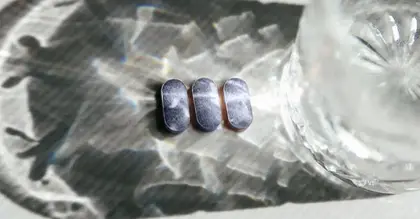Drug Detail:Diabeta (Glyburide [ glye-bue-ride ])
Generic Name: glyburide 1.25mg
Dosage Form: tablet
Drug Class: Sulfonylureas
There is no fixed dosage regimen for the management of diabetes mellitus with Diaβeta or any other hypoglycemic agent. The patient's fasting blood glucose must be measured periodically to determine the minimum effective dose for the patient; to detect primary failure, i.e., inadequate lowering of blood glucose at the maximum recommended dose of medication; and to detect secondary failure, i.e., loss of adequate blood glucose lowering response after an initial period of effectiveness. Periodic glycosylated hemoglobin determinations should be performed.
Short-term administration of Diaβeta may be sufficient during periods of transient loss of control in patients usually controlled well on diet.
- 1.
- Usual Starting Dose
The usual starting dose of Diaβeta as initial therapy is 2.5 to 5 mg daily, administered with breakfast or the first main meal. Those patients who may be more sensitive to hypoglycemic drugs should be started at 1.25 mg daily. (See PRECAUTIONS Section for patients at increased risk). Failure to follow an appropriate dosage regimen may precipitate hypoglycemia. Patients who do not adhere to their prescribed dietary and drug regimen are more prone to exhibit unsatisfactory response to therapy.
Transfer of patients from other oral antidiabetic regimens to Diaβeta should be done conservatively and the initial daily dose should be 2.5 to 5 mg. When transferring patients from oral hypoglycemic agents other than chlorpropamide, to Diaβeta, no transition period and no initial priming dose is necessary. When transferring patients from chlorpropamide, particular care should be exercised during the first two weeks because the prolonged retention of chlorpropamide in the body and subsequent overlapping drug effects may provoke hypoglycemia.
Bioavailability studies have demonstrated that Glynase®1 PresTab®1 Tablets 3 mg are not bioequivalent to Diaβeta Tablets USP 5 mg. Therefore, these products are not substitutable and patients should be retitrated if transferred.
Some Type II diabetic patients being treated with insulin may respond satisfactorily to Diaβeta. If the insulin dose is less than 20 units daily, substitution of Diaβeta 2.5 to 5 mg as a single daily dose may be tried. If the insulin dose is between 20 and 40 units daily, the patient may be placed directly on Diaβeta 5 mg daily as a single dose. If the insulin dose is more than 40 units daily, a transition period is required for conversion to Diaβeta. In these patients, insulin dosage is decreased by 50% and Diaβeta 5 mg daily is started. Please refer to Usual Maintenance Dose for further explanation.
When colesevelam is coadministered with glyburide, maximum plasma concentration and total exposure to glyburide is reduced. Therefore, Diaβeta should be administered at least 4 hours prior to colesevelam.
- 2.
- Usual Maintenance Dose
The usual maintenance dose is in the range of 1.25 to 20 mg daily, which may be given as a single dose or in divided doses (See Dosage Interval Section). Dosage increases should be made in increments of no more than 2.5 mg at weekly intervals based upon the patient's blood glucose response.
No exact dosage relationship exists between Diaβeta and the other oral hypoglycemic agents. Although patients may be transferred from the maximum dose of other sulfonylureas, the maximum starting dose of 5 mg of Diaβeta should be observed. A maintenance dose of 5 mg Diaβeta provides approximately the same degree of blood glucose control as 250 to 375 mg chlorpropamide, 250 to 375 mg tolazamide, 500 to 750 mg acetohexamide, or 1000 to 1500 mg tolbutamide.
When transferring patients receiving more than 40 units of insulin daily, they may be started on a daily dose of Diaβeta 5 mg concomitantly with a 50% reduction in insulin dose. Progressive withdrawal of insulin and increase of Diaβeta in increments of 1.25 to 2.5 mg every 2 to 10 days is then carried out. During this conversion period when both insulin and Diaβeta are being used, hypoglycemia may rarely occur. During insulin withdrawal, patients should self-test their blood for glucose and their urine for acetone at least 3 times daily and report results to their physician. Self-testing of urinary glucose is a less desirable alternative. The appearance of persistent acetonuria with glycosuria indicates that the patient is a Type I diabetic who requires insulin therapy.
- 3.
- Maximum Dose
Daily doses of more than 20 mg are not recommended.
- 4.
- Dosage Interval
Once-a-day therapy is usually satisfactory, based upon usual meal patterns and a 10 hour half-life of Diaβeta. Some patients, particularly those receiving more than 10 mg daily, may have a more satisfactory response with twice-a-day dosage.
In elderly patients, debilitated or malnourished patients, and patients with impaired renal or hepatic function, the initial and maintenance dosing should be conservative to avoid hypoglycemic reactions. (See PRECAUTIONS Section.)
- 1
- Trademarks of their respective owners, not affiliated with sanofi-aventis.




